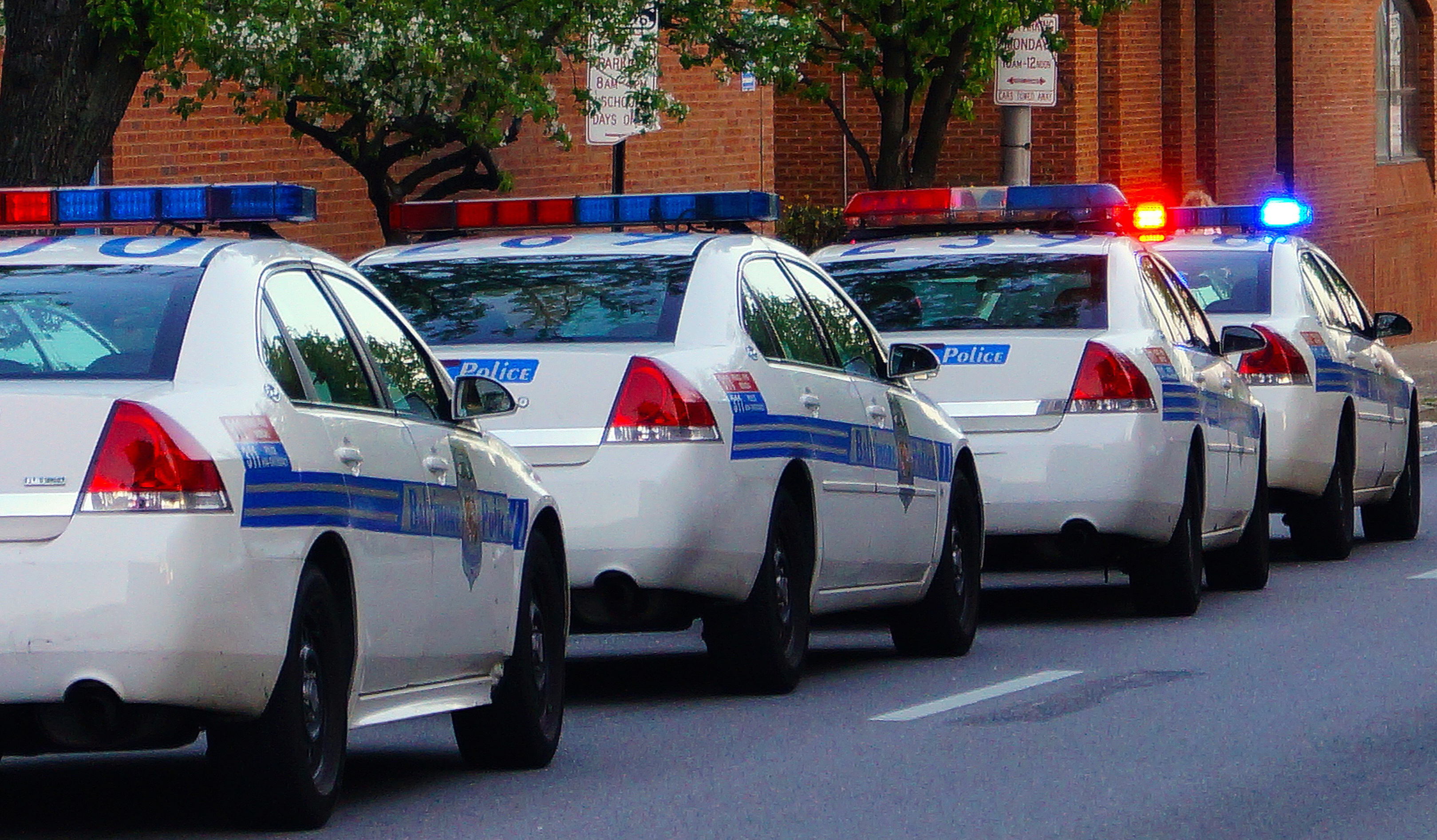The number of deadly police shootings of unarmed people has generally declined since 2015 even as the tally of fatal shootings by law enforcement is on pace to hit nearly 1,000 for the fourth year in a row, according to data gathered by The Washington Post.
Fatal shootings of unarmed black men — such as the high-profile case in March of Stephon Clark in Sacramento — are among the kinds of killings that have fallen. Criminologists said the downturn in the number of cases and their own analysis of the data indicate that evidence of racial bias by police who shoot and kill unarmed blacks has also declined but not disappeared.
“These trends mark significant changes,” said Geoff Alpert, a professor in the Department of Criminology and Criminal Justice at the University of South Carolina who has been reviewing and studying the data at The Post’s request. “What we don’t understand yet is what’s causing these numbers to move downward.”
In 2015, police shot and killed 94 unarmed individuals, a number that fell to 51 in 2016 before rising to 68 in 2017. This year, police have shot and killed 18, eight fewer than at the same time last year.
Academics warn against over-interpreting the data relating to a decline of evidence of bias. The numbers are so small, they said, that even a few cases recorded in error could produce a different result.
The Post researchers began tracking deadly police shootings in 2015 after the fatal shooting by police of Michael Brown in Ferguson, Mo. Information about shootings is gleaned from news reports and other public sources and compiled in a publicly available database.
The 2014 death of Brown, an unarmed black man, sparked nationwide protests and scrutiny of the use of deadly force by police. Last month In March, the shooting of Clark reignited the debate. Police shot him in the back yard of his grandmother’s home. Clark, a 22-year-old black man, was unarmed and holding a cellphone. The shooting was captured by police body cameras and in helicopter video.
The ongoing Post project has found that police have shot and killed 3,309 people since 2015, or more than twice as many fatal shootings per year as the average reported by the FBI. Of those killed, 231, or 6 percent, were not armed with guns, knives or other objects that could be used as weapons at the time of the shootings, according to the data.
A review of the shootings of unarmed people shows that officers were reported to be under physical attack in about 40 percent of the cases. The remaining 60 percent involved a wide range of circumstances, including individuals’ making provocative movements or verbal threats (31 percent) or fleeing, or being shot unintentionally or in undetermined circumstances, according to a review of news reports and video of the incidents. The news accounts cited in the Post database are typically summaries based on information provided by police at the time of each event.
In recent years, the fatal shootings of black men have drawn the most scrutiny and generated the greatest outrage — especially when the men were unarmed or the incidents were captured on video. The videos have provided a visual record of events that otherwise might have been described only by the officers involved. At least 38 of the 231 shootings have been recorded to some extent on police body cameras.
Since The Post began tracking fatal police shootings, blacks have been shot and killed at rates significantly higher than their percentage of the overall U.S. population. Blacks make up 12 percent of the population but 23 percent of those fatally shot by police since 2015. For unarmed shootings, blacks were 36 percent of those killed.
In 2016, Alpert, working with Justin Nix, a criminologist at University of Nebraska in Omaha, used the Post database and demographic data to examine the racial disparities in unarmed shootings in 2015.
That year, police killed 38 unarmed blacks and 32 unarmed whites. Whites accounted for 49 percent of all 2015 fatal police shootings, while blacks constituted 26 percent. The academic researchers found that blacks who were fatally shot were twice as likely to be unarmed as whites.
Since that finding, the number of shootings of unarmed people has dropped. The number of unarmed whites killed has made up a greater percentage of the total since 2016, when police killed 22 unarmed whites and 19 unarmed blacks. The pattern held in 2017, with 30 whites killed compared with 20 blacks.
This year, police have killed 18 unarmed people, with 10 whites and seven blacks. Police have also killed 42 unarmed Hispanics over the past three years, or about 18 percent of the 231 killed.
At The Post’s request, Alpert and Nix revisited their bias analysis. They said the data from the additional years of shootings had shown that their indicator of racial bias by police in unarmed shootings had declined — from blacks who were fatally shot in 2015 being twice as likely to be unarmed to only “slightly more likely” when the entire three years of data is considered.
Alpert and other experts called the trends encouraging but cautioned that it is hard to draw conclusions without additional years of data and more detailed and comprehensive information about each shooting and overall police use of force. The experts have long maintained that the FBI should collect better data.
“The national conversation about policing for the last few years has been about race,” Nix said. He said agencies have begun implementing bias awareness and de-escalation training. “We haven’t had a chance to determine their effectiveness, but it’s possible this has all had a cumulative effect on officers.”
For their analysis, Nix and Alpert used a proxy for bias: They studied cases where the officer had little provocation to shoot, or the unarmed person presented no clear threat, which they defined as a lack of threatening movements, and controlled for unintentional shootings, mental illness and other variables.
Other academics also said that the decline in the unarmed shootings is important but that any racial analysis is fraught without more data over time.
“A clerical error in one department could literally flip the interpretation of it,” said Phillip Goff, a social psychologist at John Jay College of Criminal Justice in New York and co-founder of the Center for Policing Equity.
Goff and others say that the numbers of unarmed shootings are so small that any interpretations amount to guesswork.
“When you’re looking at racial disparities you’re on super shaky ground,” said Goff, who said he hoped the public would not interpret the data to mean bias is no longer present.
Andrew P. Wheeler, a professor at the University of Texas at Dallas who studies police shootings, agreed.
“When you only look at the worst outcomes, it’s hard to say if this marks a real change or is random chance,” he said.
Nix acknowledged the data’s shortcomings but said it still has value.
“We shouldn’t ignore the data because it’s not perfect,” Nix said.
The Post’s review of shooting data showed that officers were under physical attack in 88 of 231 shootings. In about half of those cases, The Post found video, eyewitnesses or evidence of injury to police that supported the officers’ claims of attack.
In October 2017, Ryan Wilson of the Crandon, Wis., police department shot and killed an unarmed man who was trying to gouge out his eyes. The exchange was captured in dash cam and body camera video. Dexter Baxter, a 30-year-old robbery suspect in a vehicle pulled over by Wilson, managed to overpower the officer, choking him and gouging the officer’s eyes until they were bleeding.
“Stop or I’ll shoot you,” Wilson said.
Seconds later, Wilson did, shooting Baxter three times. Prosecutors ruled the shooting justified.
A few months later in Broward County, Fla., Deputy Sean Youngward, 48, was attacked after arriving to investigate a report of a disturbance. Video of the attack shows the deputy using his Taser and deflecting blows from Jean Pedro Pierre, 42, who was unarmed but enraged. Pierre punched Youngward and knocked him to the ground, seizing hold of his foot, and Youngward tried to hit him with his baton.
“Let go of my leg, sir,” Youngward said, according to the video. “Tell me what’s wrong. What’s wrong with you?”
The remaining cases out of the 231 occurred under a variety of circumstances.
In September 2016, in Winooski, Vt., police tried to arrest 29-year-old Jesse Beshaw, who was wanted on several felony warrants, next to a fenced-in basketball court. Beshaw placed a hand behind his back and advanced toward a deputy, yelling, ‘Do it,’ before the officer shot and killed him,” according to reports in the Burlington Free Press and body camera video of the incident.
In March 2016, in Lenoir City, Tenn., 30-year-old Joshua Grubb sped away in his pickup truck from a police officer who had been questioning him, according to news reports. The officer jumped into the bed of the truck and shot Grubb several times through the back window of the cab. Police ruled the shooting justified.
In July 2016, Los Angeles County sheriff’s deputies were looking for a carjacking suspect who had fired at officers and disappeared into a neighborhood.
Officers encountered Donnell Thompson, 27, a mentally disabled man asleep in the front yard of a house, and assumed he was the suspect. A SWAT unit arrived in an armored vehicle. Thompson did not respond to commands, remaining motionless with one hand under his head and the other concealed near his waist. Deputies threw flash-bang grenades and shot him with foam bullets, The Post reported.
Thompson pushed himself to his feet and ran toward the SWAT vehicle, police said. An officer in the vehicle’s turret shot Thompson twice in the upper torso with an M4 rifle, the Los Angeles Times reported.
Thompson’s sister later told reporters that she thought her brother did not respond to commands because he was afraid and confused. Los Angeles County in September paid $1.49 million to settle a lawsuit filed by Thompson’s family.
The Los Angeles Sheriff’s Department later called the shooting a “terribly devastating event.”






